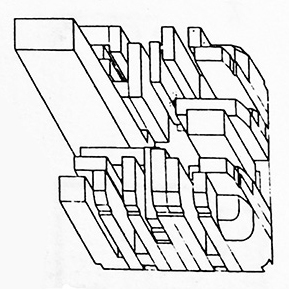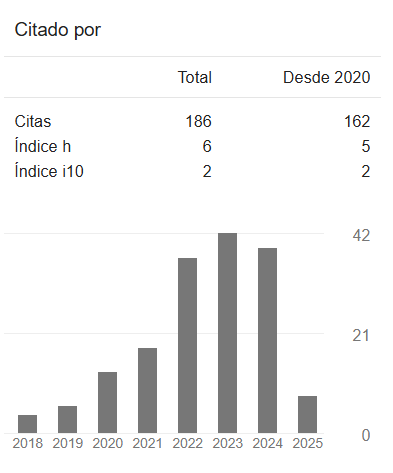First and last debate on the implementation of FOT concept
DOI:
https://doi.org/10.35305/23626097v6i11.233Keywords:
Planning Code, land use, FOT, urban planningAbstract
A panel discussion on “Total occupancy factor and municipal urban policy” was held at the Central Society of Architects (SCA) in July 1971. It was focused on the relevance of incorporating the notion of total occupancy factor (FOT) as an instrument to control the intensity of land use into the new Urban Planning Code (CPU) for Buenos Aires which was about to be approved. Experts and professionals involved in the construction of the city who had been working for the public administration, and, academy and market representatives were invited. Taking as an analysis case the article about the debate on 1971 FOT legislation which was published by SCA Magazine in its issue number 68, this text is intended to approach this meeting so as to reflect on FOT implementation as an instrument of urban planning. It is also discussed the role played by the invited professionals based on their different concerns regarding the professional practice.
Downloads
Metrics
References
Diez, F. (1985). Vivienda colectiva, ciudad y regulación: cuarenta años de desencuentros. Summa temática, 4, 60-65.
Gobierno de la Ciudad Autónoma de Buenos Aires. (2018). Nuevo Código Urbanístico. Recuperado de https://www.buenosaires.gob.ar/desarrollourbano/codigo-urbanistico?utm_source=emBlue&utm_medium=email&utm_campaign=Noticias_CPIC&utm_content=Noticias%20Especial%20del%20CPIC%20N%C2%B0548--Nuevo%20C%C3%B3digo%20de%20Planeamiento%20Urbano&utm_term=multiple--5--none--60-70--ENVIO%20SIMPLE
Menéndez, E. (2018). FOT: el planificador urbano, el empresario, su política, su mercado. En: L. Müller et al.; A. Monti (Comp.); A. M. Rigotti (Dir.); S. T. Pampinella (Ed. lit.), Profesionales, expertos y vanguardia: la cultura arquitectónica del Cono Sur: Actas Seminario Internacional (pp. 134-141). Rosario, Argentina: UNR Editora. Recuperado de: https://fapyd.unr.edu.ar/publicaciones/
MCBA. (1968). Organización del Plan Regulador; Informe preliminar Etapa 1959 1960 (Tomo I); Descripción sintética del Plan Regulador (Tomo II); Distribución espacial de la poblacion y usos del suelo (Tomo III); Planos (Tomo IV); Descripción sintética (Tomo V). Buenos Aires, Argentina: Organización del Plan Regulador.
MCBA. (1973). Código de Planeamiento Urbano para la Ciudad de Buenos Aires. Buenos Aires, Argentina: Inédito.
MCBA. (1977). Código de Planeamiento Urbano de la Ciudad de Buenos Aires. Buenos Aires, Argentina.
Petroni, C y Kratz de Kenigsberg, R. (1966). Diccionario de Urbanismo. Buenos Aires, Argentina: Cesarini Hnos Editores.
Reporte Inmobiliario. (2018). Recuperado de https://www.reporteinmobiliario.com/nuke/carpeta/nuevo-codigo-planeamiento.pdf
Suárez, O. (1986). Planes y códigos para Buenos Aires 1925-1985. Buenos Aires, Argentina: Imprenta y Publicaciones FADU
SCA. (1972). Factor ocupación total y Política urbana municipal. Revista de la Sociedad Central de Arquitectos, 68, 25-27.

Published
How to Cite
Issue
Section
License
Open access policy
A&P Continuidad is a non-profit and open access publication. According to Mexico Declaration on Cultural Policies, the journal distribution is submitted to Creative Commons Attribution-Noncommercial-ShareAlike 4.0 International Public License (CC BY-NC-SA). “Neither the commercial use of the original work nor that of the possible derivative works are allowed. The distribution of derivative works should be submitted to the license regulating the original work. This license is not free.”
A&P Continuidad authorizes the partial or full reproduction of texts and graphs provided that the source is cited. Authors are exclusively responsible for the criteria expressed in the articles which do not necessarily reflect the opinion of the Editorial Committee or that of the Direction Board. The copyright of the published articles pertains to their authors or publishers.
Transfer of rights
The acceptance of an article to be published implies the author’s transfer of rights to the journal. Authors continue to have the right to use the material in future books or publications, approve or veto the republication of their works as well as the rights related to patents or other rights. Transfer of rights form may be downloaded here.





























 This OJS site and its metadata are under a
This OJS site and its metadata are under a 

